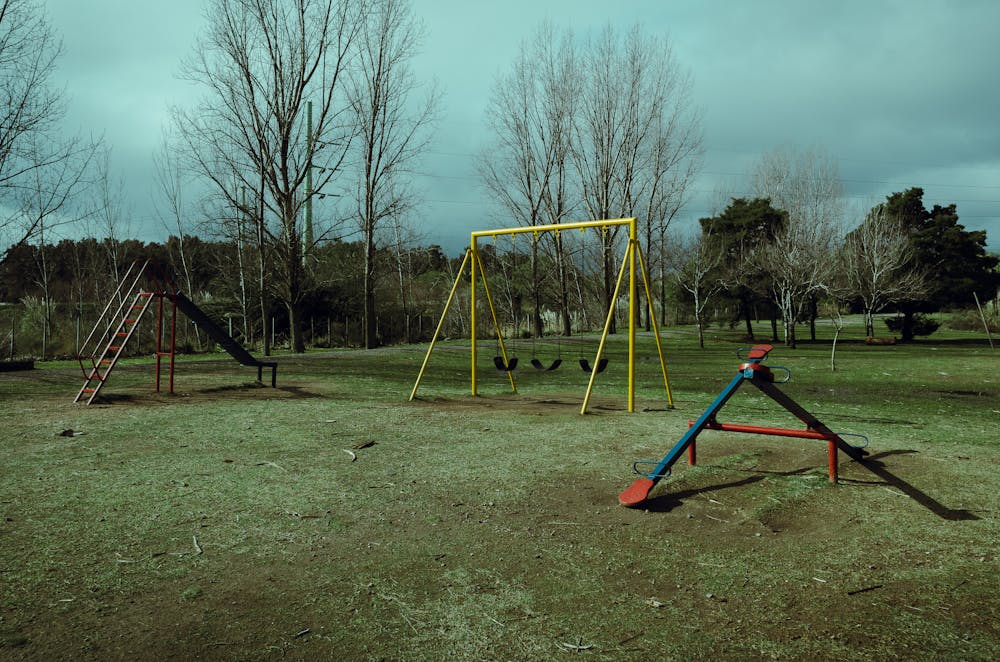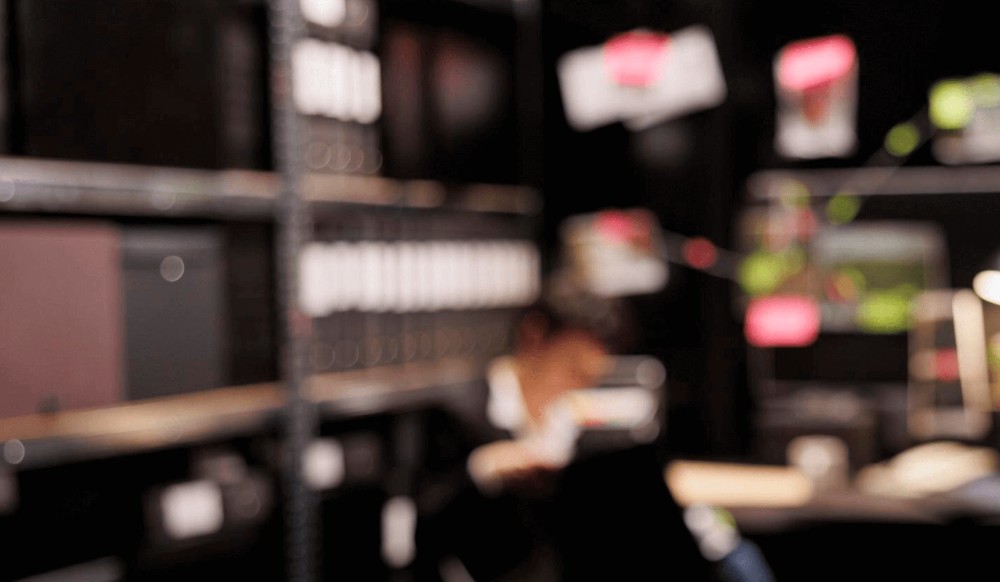Across British Columbia, the launch of Surrey DPAC’s Room Clear Tracker has ignited a storm of debate among parents, educators, and disability advocates. Some view it as a necessary step toward transparency; others fear it will reinforce stigma or justify segregation. Beneath the surface of this argument runs a deeper fracture—between those who seek safety and those who seek inclusion—as if the two were mutually exclusive. This essay examines the data controversy in Surrey and the false dichotomies that underlie it, tracing how austerity and administrative paralysis have turned families, teachers, and advocates into reluctant adversaries.
Points raised by Canary Collective
I recently reviewed this post by Canary Collective:
I am reposting this comment from Canary Collective, in its entirety (emphasis mine). On Facebook, The Canary Collective wrote:
I keep coming back to this: The Room Clear Tracker frames a systemic problem as an individual one. I believe the intention behind it is to highlight the lack of support in schools. I also believe the Ministry of Education already knows this. Data is important, but we have to be mindful of what data is being collected, who is represented, and how it will be interpreted.
There were a few red flags for me right away. The tracker has the support of both local unions. These are the same unions that were hesitant to circulate the Ombudsperson’s exclusion survey because it could have highlighted exclusionary practices carried out by educators. Unions protect their members. That is their role. This tracker does not expose teachers to accountability. Instead, it produces data that supports a narrative of rising violence in schools, which is currently a major bargaining issue. We need to separate human rights from collective agreements.
The language of the survey also signals who it is designed for. It asks whether the class was in remedy, yet most parents are not even aware of what remedy means or why it exists. Remedy itself is highly problematic, but more on that in another post. The survey also does not include options for how the situation was responded to, such as whether a debrief was held with staff and students. We know that trauma develops when experiences of distress are not processed. Instead, an option listed is that the safety or behaviour plan was updated. These plans are frequently used to justify exclusion and often include partial-day attendance or times when the student will be sent home. The absence of options indicating collaborative processing and relational repair tells us something about the purpose of this data and who it is meant to serve.
And while the survey is described as anonymous, asking respondents to identify both the school district and the school significantly narrows that anonymity. It will not take long for districts to connect the dots. When that happens, the pressure will fall on schools to reduce the number of room clears. When a system is not given the support it needs, and exclusion is the only available tool to reduce a visible crisis, exclusion becomes the default response.
No parent sends their child to school hoping they will clear a classroom. And no parent wants their child to be cleared out of a room because the environment is unsafe. The issue is that one group of parents represents the majority, and their voices will be louder, their stories more widely believed, and their harm addressed more quickly. Their experiences will shape the narrative of what is happening.
This is how we end up with the story that some children are ready for school and others are not. And we know who gets placed in that latter category. It is always disabled, neurodivergent, and marginalized children whose access becomes conditional and whose presence is framed as a disruption rather than a right.
We also have to be honest about whose data will be captured. I do not believe many parents of the children who are the subject of room clears will complete the survey. Their experiences are shaped by fear of blame, stigma, and already feeling unheard. That means this data will be one-sided. And one-sided data reinforces public narratives that already position disabled students as the “problem.”
But the truth is that there is already documentation. If a large public institution does not have a system to record these events as critical incidents, that is the problem. The Ministry of Education must require districts to report all exclusions, partial days, suspensions and expulsions, and all uses of restraint and seclusion. Districts are required to report on literacy and numeracy rates, so there is no reason that accountability in these areas should be optional.
Only when this information is made public will it become clear that exclusion is being used as a management strategy, a way to cope with inadequate support rather than a last resort for safety. Transparency cannot be voluntary. It must come from the top. Without clear, enforced reporting requirements, districts will continue to hide information and leave schools, classrooms, families, and students in an ongoing crisis.
These conversations are important, and we need to keep having them. They are uncomfortable because they should be. I hope we can continue to see this issue from multiple points of view, and recognize that different truths can coexist and still be valid. We can care about the safety of all children and also care deeply about the dignity and inclusion of disabled students. We do not have to choose one or the other.
If we can hold these complexities together, we can move forward in a way that does not sacrifice one group of children to protect another. Real change is possible, but it requires us to stay in the dialogue, stay curious, and stay committed to building an education system where every child belongs.
The Canary Collective’s warning lands with precision
This passage raises essential truths about power, narrative, and responsibility:
- Accountability must be structural. The Ministry—not parents or unions—holds the duty to track exclusion, restraint, and seclusion. If it can measure literacy and graduation, it can also measure harm.
- Data without context reinforces bias. When collection lacks power analysis, it reproduces ableist stories—casting disabled students as sources of disruption rather than casualties of austerity.
- Representation matters. Families most affected by exclusion are often too exhausted or afraid to participate, leaving the dataset dominated by voices already centred in public discourse.
- Narrative shapes policy. Data collected through systems of privilege risks turning lived suffering into administrative justification. The story told by numbers can entrench inequity as easily as expose it.
The Room Clear Tracker may individualise a structural crisis, but its existence reveals a deeper truth: it should never have fallen to parents or unions to build what the Ministry has abandoned. If the government counted every exclusion, every partial day, and every removal, no one would need to create parallel systems at all.
Inclusion that endangers children is not inclusion; safety that relies on erasure is not safety. Transparency must be structural, not improvised.
-
Controversy over Room Clear Tracker
When we first shared the launch of Surrey’s Room Clear Tracker, we saw it as a potential step toward long-overdue transparency. For many families, including my own, the absence of data about classroom evacuations has preserved the illusion of safety while concealing the scale of harm. The idea that someone, finally, was…
Reflecting on our own experiences
The discussion of safety in schools cannot remain abstract. Every policy failure has a human face, every staffing gap a moment of crisis lived in real classrooms. The Canary Collective is right to warn that the Room Clear Tracker may reproduce the dominant story—the one that centres the frustration of non-disabled parents and casts disabled children as the source of chaos rather than the casualties of chronic under-support. The narrative that follows will likely be one of ruined pizza parties and bitten teachers—a story that blames children deemed “not school-ready” for unsettling the comfort of others.
Our story is not that one. It belongs to the parents too frightened to complete the tracker, to the children placed in impossible environments, and to the teachers left to manage the fallout alone. It shows what happens when inclusion is celebrated in rhetoric but abandoned in practice—when systems fail to count the suffering their choices cause.
The false binary of inclusion and safety
In my son’s kindergarten year, we told the school he would need one‑to‑one support. He’d been receiving it in daycare, where he’d experienced abuse, and he would receive an austism diagnosis that year.
The principal chose a wait‑and‑see approach to support. Midway through the year, during a moment of dysregulation, my six‑year‑old lunged at his teacher and tried to strangle her in front of the entire class. It was horrifying for everyone involved— my son, his teacher, his peers, and our family.
Teachers’ fear of violence is real, and parents like me share that fear. I did not want that teacher hurt any more than she wanted to be hurt by my son. I did not want the whole class to be traumatised or to endure the disgusted and suspicious looks of many of the rest of the kindergarten parents that year. I did not want this to be my children’s ‘welcome to kindergarten’ experience. What happened was preventable.
Adequate staffing, consistent regulation strategies, and collaborative planning could have ensured safety for everyone.
Children absorb pain
In sixth grade, my Autistic daughter was hurt repeatedly by a male classmate with ADHD who also needed more support than the school was willing to provide. Staff called it inclusion. They told me that my daughter was being exclusionary for pushing for sanctions against this boy—200 pounds to her 55—who kept hurting her and touching her against her will. I actually asked for more support for him, but they do have selective hearing.
My daughter, who goes into freeze or fawn more often than fight or flight, endured him threatening violent acts and laughing. Sometimes she laughed, because she couldn’t figure out what else to do, to avoid further retaliation.
It was an atrocious situation that required immediate, skilled intervention.
The institutional response was to suppress the truth. The principal’s acted as if my daughter was the barrier to inclusion. When she called the police because staff wouldn’t intervene when she felt unsafe, the principal told them not to come. The message was that she needed to stop calling for help, to stop telling the truth, to accept that being an autistic girl at school meant being touched against her will.
I found myself in the unthinkable position of reaching out to the mother of the boy who was hurting my daughter, begging her to implore him to stop interacting with her. That conversation was as painful as it was futile. We were two mothers, each watching our child break, united by the absence of real support. She would choose not to respond, which I could completely understand and probably would have been how I would’ve felt in the same circumstance.
After that, I personally had to call the police. The school encouraged that action, situating blame squarely on a child who had been failed, not on their own inaction. And legitimately they were probably also afraid of boy, whom they had ‘supported’ since kindergarten.
Both children were failed. Both were placed in an impossible environment and left to absorb the fallout.
The parent who asked for safety
Throughout the years well-meaning parents have gently suggested that I reach out to the Parent Advisory Committee (PAC) for help—because, they insist, that is what PAC is for!
My experiences tell a different story. The PAC I have encountered reflects a particular social order: dominated by parents who see themselves as protectors of the status quo, who treat disability and difference as disruptions rather than realities that demand structural care. They want to plan their pizza parties without the inconvenience of my negativity.
A friend once told me about her time on the Parent Advisory Committee. She was raising two children with anaphylactic allergies. When the group planned meal options for the school’s hot lunch, she proposed that at least one option come from a verified nut-free facility. The room went quiet. Someone sighed that this would be difficult, as though protecting a child’s life were a logistical burden. The moment passed, but the message remained. Even within parent networks, the safety of vulnerable children is framed as inconvenience, their presence treated as a problem to manage rather than a responsibility to honour.
-
“Too much”: on allergy, autism, and the systemic erasure of care
There is a quiet solidarity among parents whose children are considered too much for school. Some of us carry medical kits. Others carry binders of psychological assessments. But all of us carry the same invisible burden: a system that treats our children’s needs as optional—and our vigilance as overreaction. This is the story of two […]
When my daughter was harmed at school and responsibility began to edge toward the principal—the same principal who had once taken the phone from her as she tried to call the police—I looked up how to file a Teacher Regulation Branch complaint. The instructions suggested contacting the Parent Advisory Committee for support. I did.
The person who replied sent a kind, bureaucratic message advising me to speak with the teacher and the principal before taking further steps and inviting me to raise the issue at the next PAC meeting—one she noted the principal would be attending. She reminded me to keep careful notes, as they would be important in deciding the case.
The absurdity was breathtaking. A PAC meant to represent families had become an administrative relay, redirecting grievances back to authority. The message performed care while reinforcing hierarchy—offering sympathy as it steered me toward the very person under scrutiny.
The unsent reply remains in my email drafts folder:

Not to worry, though. I have kept careful notes!!! This website has now passed half a million words—a record of every silence, every procedural loop, every polite dismissal. The Teacher Regulation Branch and Ombudsperson processes, with their forms, follow-ups, and performative courtesies, would also turn out to be make-work rituals designed to exhaust the complainant rather than confront the complaint. However, this site stands as an archive of that complicity—evidence of a culture that cultivates a veneer of accountability while refusing its substance.
-
The Ombudsperson and the war of attrition with systems of escalation
This essay is in response to the closure of my complaint by the Office of the Ombudsperson of British Columbia. It documents my family’s experience navigating the education complaint system, the Teacher Regulation Branch, and the Ombudsperson itself. It exists to show how a system meant to protect fairness becomes one that delays, deflects, and […]
Does inclusion necessitate violence?
What happened with my son in kindergarten and to my daughter in 6th grade both underscore: under‑resourced inclusion creates conditions where both children and educators are unsafe. Staff safety concerns are real, rooted in repeated exposure to crisis without support. Parents’ fears are real too—the terror of knowing their child’s distress might one day hurt someone or that their child might be hurt. Or knowing that this lack of support will be used to justify the exclusion of their child. Or knowing that all this drama might make school an impossible place to learn.
These stories sit at the heart of the current debate in Surrey, where staff safety and student inclusion are inseparable, yet the system keeps them at odds. And where the ethics of the PAC and Teacher’s Union are being scrutinised.
To understand how these systemic failures manifest, it helps to begin with the broader framing: the rhetoric of inclusion in education often masks the absence of real safety structures. Policies promise belonging, but underfunding ensures fragility.
True inclusion is safe by design. It requires more adults—adults willing to lean in rather than deflect accountability. It requires preparation, not improvisation. It requires leadership that funds safety and inclusion.
The uneasy alliances shaping Surrey’s inclusion debate
These personal stories echo far beyond one family or one classroom. They illuminate how systemic tensions grow out of shared exhaustion—parents, teachers, and advocates each grasping for stability within a system that keeps them in conflict instead of collaboration.
When disability advocates like Canary Collective express concern about the Room Clear Tracker, they are not wrong to worry. Data about disabled students has too often been weaponised to justify segregation. The fear that such a tool could serve that purpose again is valid and should give every parent pause. Yet the existence of that risk does not erase the legitimacy of what the tracker’s creators are trying to expose: classrooms have become unsafe, for everyone.
Teachers’ unions advocate for reduced classroom violence, while parents fight for meaningful inclusion. These goals are not opposites—they are interdependent. A school where staff fear for their safety cannot nurture belonging, and a classroom where children are physically unsafe is not inclusive. The demand for proper staffing and safe environments serves both groups. The division between them is the product of a government that treats safety as a privilege and inclusion as an aspiration rather than a guarantee.
Comparing the systems of counting
| Factor | Government of British Columbia | BCEdAccess Exclusion Tracker | Surrey DPAC Room Clear Tracker |
|---|---|---|---|
| Initiator / Ownership | Ministry of Education | BCEdAccess Society (parent-led) | Surrey DPAC with STA & CUPE 728 |
| Governance model | Ministerial, bureaucratic | Disability-led, parent-centred | Mixed governance: PAC parents and unions |
| Declared purpose | Track attendance | Document exclusion and discrimination | Measure classroom evacuations and safety risks |
| Scope / Reach | Province-wide, all public schools | Province-wide, voluntary | Primarily Surrey |
| Cadence | Daily entry, annual aggregation | Continuous; annual report | Continuous; pilot stage |
| Data points | Attendance code, days of absence, designation | Date, reason, supports removed, duration | Type of incident, grade, staffing context, number affected |
| Data ownership | Government | BCEdAccess | Surrey DPAC via Google Forms |
| Data residency | Canadian government servers | Canadian nonprofit | Google global cloud |
| Consent / anonymity | None; identifiable | Optional; anonymised | Claimed; partial risk of identification |
| Validation | Staff-entered | Parent-attested | Reporter-attested |
| Framing | Attendance as proxy for engagement | Exclusion as rights violation | Crisis as evidence of underfunding |
| Public reporting | Annual; limited | Annual; transparent | Undetermined |
| Privacy framework | FOIPPA | Nonprofit ethics | Google privacy policy |
| Cross-tab with disability | Internal only; unpublished | Central to dataset | Inferred; not explicit |
| Risks | Data hides cause; lack of proper reporting and correlating attendance to demographics | Low; advocacy-aligned | Moderate; risk of misuse |
| Longevity | Institutional | 2018–present | 2025–present (new) |
| Moral framing | Compliance | Accountability | Prevention? |
What the government doesn’t count
The Ministry of Education collects daily attendance for every child in the province. It also tracks which students have disability designations, which classrooms have education assistants, and which schools receive supplementary funding. All the data required to understand who is excluded already exists. Yet the Ministry refuses to connect the dots. It does not cross-reference attendance with designation. It does not distinguish between a child who stays home sick and a child who stays home because school has become unbearable. It publishes glossy claims about inclusion while concealing the evidence that would test those claims.
This refusal is not a technical limitation—it is a political choice. Privacy law does not prevent anonymised analysis. What prevents it is fear: fear of accountability, of moral reckoning, of what the numbers might show. By choosing ignorance, the Ministry protects itself from the responsibility to act.
True inclusion cannot exist in the absence of safety. If a child cannot enter a classroom without harm, or a teacher cannot teach without fear, then inclusion has failed in both spirit and practice. Counting attendance without context is statistical theatre; it performs care while erasing danger.
Toward shared purpose
The warnings from disability advocates carry moral weight. Data can wound when stripped of context, but silence does greater harm. The drive behind the Room Clear Tracker—to make visible what the government refuses to count—springs from the same exhaustion that fuels every parent who fills out an exclusion form or documents a removal. The ethical challenge is to build conditions where these parallel systems are no longer necessary, where transparency and protection coexist.
Real inclusion and safety share the same foundation: adequate staffing, collaboration, and the will to design schools where every student and educator can breathe. A truly inclusive classroom hums with calm and competence. It has adults who understand regulation, time for preparation, and leadership willing to measure what matters. Until that vision becomes reality, families and educators will keep counting the harm themselves—because refusing to count it has never kept anyone safe.
The reckoning ahead
The debate over the Room Clear Tracker is not about forms, surveys, or even data privacy—it is about who holds the power to define harm. For too long, the province has treated safety as a managerial concern and inclusion as a marketing slogan, leaving families and teachers to navigate the wreckage. When a government refuses to provide meaningful data on exclusion, it chooses ignorance over responsibility. When it praises inclusion without funding it, it turns human suffering into policy theatre.
Parents, advocates, and educators are standing within the same collapsing structure, fighting over fragments because the Ministry has failed to build a foundation. The true divide is not between those who seek safety and those who seek inclusion—it is between those who live inside the harm and those who benefit from its invisibility.
Until British Columbia counts what it fears to see, every act of counting will remain both rebellion and memorial—a ledger of what the province refused to learn. Real inclusion begins with the courage to measure, the humility to act, and the will to make safety a universal condition.
-
Too afraid to see: why the BC government doesn’t track exclusion
Data is the scaffolding of democratic accountability. Without shared facts, policy becomes theatre and suffering becomes rumour. That is why regimes that fear transparency always tamper with the census, and why bureaucracies that fear criticism cling to privacy as a shield rather than as a right. When governments decline to track exclusion, they are not […]










